Eighteen months ago, the people who make World of Warcraft and Diablo released a card game. Players liked it, for good reason. Hearthstone was immediately a lot of fun. It also pretty much played by the rules that would bind any physical card game. You had cards, a deck and a fair amount of predictability. Like poker, you could get surprised by which card your opponent played, but not too surprised. A year ago, though, things started changing.
Hearthstone isn’t a physical card game, after all. It’s a virtual one. Over the past year, the game’s designers at Blizzard have embraced its lack of physicality, unmoored it from the limits of plastic and cardboard and transformed Hearthstone into a card game that simply could not exist outside of the digital realm. Those changes have thrilled some players, angered others and all been the product of a lot of hard thinking by the people behind the game.
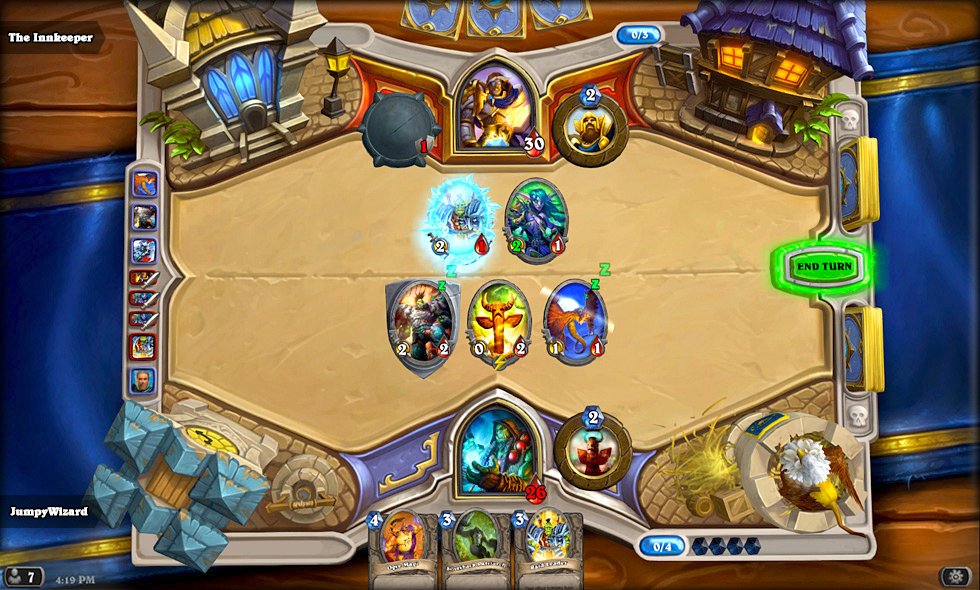
When it launched, Hearthstone worked like traditional collectible card games such as Magic the Gathering. The game started you with a batch of cards, and you played them to defend your hero, or face, while attacking your opponent. The game had no frills or complicated permutations. Things were simple. There are some Magic cards with text longer than a paragraph, but in Hearthstone it was scarcely more than a word or two.
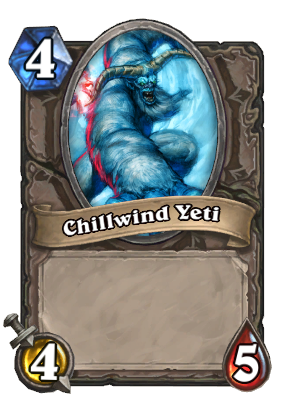
Back when Hearthstone was more predictable, The Chillwind Yeti was the gold standard. It was four mana 4/5 that was both deadly and hard to kill, the perfect midrange threat. In Hearthstone you get an incremental increase of mana each turn, which means the Yeti could be put into play as early as turn four. It could attack for four points of damage and could only be killed after depleting its five hit points. Blizzard handed out two copies for free in every new Hearthstone account.
In the months after launch, Hearthstone started to transform, thanks to an evolution of the game’s design philosophy. Its creators seem to have realised that Hearthstone could do things that Magic or Doomtown or any other collectible card game can’t. What if, for example, there was a Hearthstone card that let you draw not from your deck, but from the game? Any card that’s ever been coded, dropped into your hand from a distant Blizzard server? A year ago the idea of a Hunter playing a Druid minion or of a Rogue playing a Paladin spell was a supremely rare occurrence. Now it happens every couple of games. Hearthstone has become a place where anyone can do anything, where no possibilities are off the table, where every so often, a violent swing of game-breaking chance can muster rapturous victory or bewildering defeat.
Chillwind Yeti is now a hallmark of the past, of a simpler time. Other cards have come to better represent what Hearthstone is now all about.
Last December, Blizzard released Goblins vs. Gnomes, Hearthstone’s first major injection of new cards. One of those cards is called Piloted Shredder. Shredder is a four mana 4/3 with a crucial effect. When it dies, it summons any random two-mana minion from the entire game.
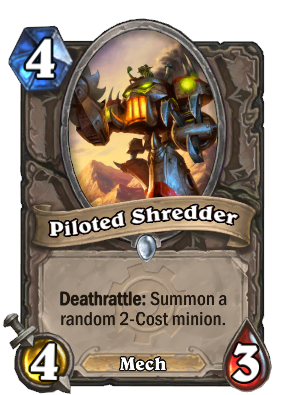
The repercussions of that card were huge. Your Shredder could die and spit out Millhouse Manastorm, a two mana legendary minion with a gaudy 4/4 statline. When that happens, you’ve earned a total of 8/7 stats off your four mana minion. At the same time, your Shredder could summon Vitality Totem, an 0/3 Shaman minion that doesn’t do anything except give you a small heal at the end of your turn. In total, there are 84 potential minions that could spawn from your Piloted Shredder: some average, some good, some bad, some game-winning, and some game-losing.
Despite that huge amount of variance, Piloted Shredder has effectively replaced the Chillwind Yeti. It is now the marquee, standard minion inserted into practically every competitive deck in Hearthstone. It exhibits a new philosophy taking hold in Blizzard’s card design: unpredictable effects make our game more interesting, and so our game will have unpredictable effects.
“The thing that started it all was Webspinner in Curse of Naxxramas [the first Hearthstone mini-expansion],” says Ben Brode, lead designer of Hearthstone. That card came out in July 2014. “It was pretty universally loved by both everyday players and hardcore tournament players. I think the reason cards like that work for Hearthstone is that they make every game a little bit different, and it gives opportunities to really good players to show off their skills when they’re presented with novel situations that they have to adapt to.”
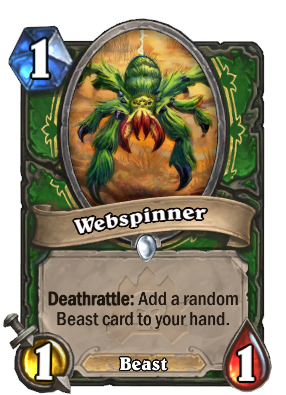
Webspinner is a Hunter card. It’s a one mana 1/1 minion that, upon dying, puts a random Beast card into your hand. You could get anything from a 2/2 Scavenging Hyena to the terrifying eight mana Gahz’rilla. As Brode says, it was the first time Blizzard played with the limitless nature of a digital card game.
“You may not have ever had to figure out how to use King of Beasts [an underplayed card that’s also one of the things that can trigger off of Webspinner] correctly before, but if we put it in your hand, you have to make it work to your advantage. Good players can do that better than bad players, so it increases the skill it takes to play Hearthstone,” says Brode.
The Hearthstone team believes that cards like Webspinner and Piloted Shredder work to break up the monotonous nature of the average card game. High-level Hearthstone is usually played with decklists polished to a mirror shine. Control Warrior, still the standard-bearer for slow, grind-out victories, has more or less stayed the same since Hearthstone debuted. Piloted Shredder is powerful enough to demand play, but also volatile enough to keep things unsteady. You mix cards like that into decklists, and you can open bizarre possibilities.
Take Tempo Mage and Control Warrior. These are deck archetypes that have existed since dawn of Hearthstone, and their matches have always looked the same. If the Warrior survives the early pressure, he wins. But now Tempo Mage runs cards like Unstable Portal, which puts a random minion from the game into your hand for a discount. Maybe the Mage cops a Deathwing off their Unstable Portal, and turns the tide in the late game? Maybe the Mage is running the just-released Spellslinger, which adds a random spell to each player’s hands, and gets a lucky Pyroblast for lethal. But maybe the Warrior gets an Ice Block off that same Spellslinger and manages to stay alive? Maybe the Warrior produces a taunt off their Piloted Shredder and is able to prevent lethal for an extra turn and stabilise?
Cards like Piloted Shredder have undeniably made Hearthstone a more interesting game, but it’s also pretty frustrating when you lose to something completely outside of your control.
Above: At 9:40, a Hearthstone player uses Unstable Portal and gets Nefarian, a card which gives you two random spells. He gets the exact spell he needs to win the game. And I mean exact.
Jeffrey “Trump” Shih is one of the most popular Hearthstone streamers in the world. Recently he was playing in the OneNationofGamer tournament against a player named Chen “tom60229” Wei Lin. In one of their games Trump seemed guaranteed to win with a giant Shade of Naxxramas. There was nothing Tom could do, except attack into Trump’s Piloted Shredder.
That Piloted Shredder popped out Doomsayer, a 0/7 minion that, at the start of your next turn, completely wipes the board. Trump’s Shade of Naxxramas was gone, and he promptly lost the game. That was a 1.2 per cent chance that Trump hit at the absolute worst time.
Trump is one of the more high-profile players who has called for a nerf to Piloted Shredder. In his video “Trump Changes Cards” he proposes making Shredder a 4/2 instead a 4/3, the same nerf he proposed to Kotaku in an email. A 4/2 is much more manageable, much easier to remove, something that doesn’t feel like a must-run despite its occasional, disastrous drawbacks.
“At this point it’s really, really hard to make a four-drop that’s competitive with Piloted Shredder,” he says in the video. “[At 4/2] it’s still a good card, but it would bring more thought to the four drops that can be played.”
Blizzard knew that Piloted Shredder would be a strong card, but they felt what it added was more important than what it took away.
“When we were designing Piloted Shredder we talked about whether we wanted this to be one of the best four drops or not,” says Mike Donais, senior designer of Hearthstone. “We talked about whether it was fun to watch, fun to play, and whether it increased skill as well as luck. We want that to be part of the game. People play hundreds of games of Hearthstone, and Piloted Shredder makes sure that each game has a little bit of surprise, a little bit of excitement. We thought that was important, so we decided to make the card.”
The sentiment is echoed by Cong “StrifeCro” Shu, one of the best pro Hearthstone players in the scene.
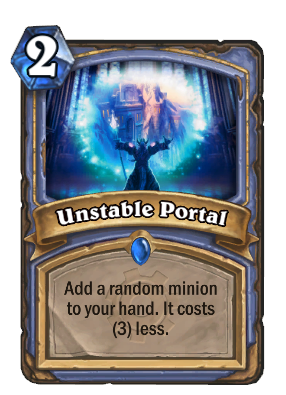
“I very much enjoy minion combat in Hearthstone,” wrote StrifeCro in an email to Kotaku. “I feel the most healthy decks are decks that fight for incremental advantages on board, and cards like Piloted Shredder generally fall into those categories. Even if they are a bit strong, I much prefer a metagame where these are the most powerful cards instead of Emperor Thaurissan and Grim Patron or Freeze Mage, for example.”
The cards StrifeCro mentions are components of certain massive combo decks in Hearthstone. Grim Patron Warrior and Freeze Mage can kill an opponent in one turn if the person playing them gets the right cards in the right order. Decks like that are against Hearthstone’s operandi. Blizzard established a precedent of opposing strategies like that last year, with the nerf of a similarly combo-oriented card Leeroy Jenkins.
“Leeroy Jenkins created a strategy that revolved around trying to defeat your opponent in one turn without requiring any cards on the board,” wrote community manager Zeriyah. “Fighting for board control and battles between minions make an overall game of Hearthstone more fun and compelling, but taking 20+ damage in one turn is not particularly fun or interactive.”
Piloted Shredder is strong, but it’s also honest. It sticks to the board and demands an answer. It’s not part of any one-turn beatdown. Blizzard kept it powerful because it doesn’t make opponents feel completely powerless.
But there’s that one nagging question. Is it ok for a card to occasionally hit a one-per cent chance and lose you a game? Shredder can be absolutely devastating sometimes, and Hearthstone is a game that’s played for money, fame, and prestige. There are real stakes and real livelihoods on the line.
Again, this is the nature of card games. They can have their wild cards, their surprise twists. But Blizzard has doubled-down on Hearthstone’s randomness. With The Grand Tournament, the latest expansion released this summer, we have spells like Burgle, which gives you random class cards. We have minions like Nexus-Champion Saraad, who can be triggered to give you random spells. There’s a new card called Ram Wrangler that, when played, can stock you with anywhere between a combined 4/4 or 11/11 worth of stats. Sure all these effects regress to the mean, but it can be pretty frustrating to take a really bad beat.
That’s the thing. Hearthstone does have a huge competitive community that might grumble about the randomness, but it also has a much larger, much more populated casual demographic. Cards can’t just be designed to appease the highest end of competition. They also need to be fun. They need to be vibrant. They need to make crazy things happen, because that’s what keeps this game healthy. Blizzard’s theory is that their more random cards, the ones using RNG or random number generation, appeal to the masses.
“RNG gets your emotions really high and really low,” says Donais, the designer. “It makes you really feel. Sometimes when I play a game I’m just going through the motions and I’m not getting those highs and lows, but in Hearthstone I get them all the time. It makes me want to come back and play more.”
Above: At 5:16 of an episode of a YouTube series about funny and lucky Hearthstone plays, an opposing player gets a lucky break with an Unstable Portal, pulling Alexstraza and healing himself out of guaranteed death.
“Losing sucks,” says Blizzard’s Brode. “Randomness can help protect new players. When you can point to something, like ‘oh I lost because he got Huffer’ [one of the minions that can spawn off of the Hunter spell Animal Companion]. It feels like you didn’t necessarily lose because you played worse, the truth is you got within four health of losing, and that happened over a whole game of decisions you made. But you can still point to something random and say ‘that’s why I lost.’ The ability to protect yourself helps a lot of new players.”
I play Hearthstone a lot. One of my favourite things involving the game is Trolden’s Funny and Lucky Plays series. People submit the insane things that happen to them in a game of Hearthstone, and he compiles them in a weekly video. Tune in to watch someone get a King Krush off a Ram Wrangler for perfect lethal. It might not be fair, but I love this stuff. The community loves this stuff. It’s why we’re still playing Hearthstone every day.
“There’s lots of different types of players of Hearthstone,” says Brode. “There are people who want a great story to come out of a game. There are players who really want to express their artistic talent in deckbuilding that want to stretch their imagination. There are players who just want to show how good they are at playing strategic games. When we launched The Grand Tournament we introduced 130 new cards. There’s no reason to tune all of those cards to a single type of player.”
Hearthstone is going to break some more hearts. It will continue to hit wild, unimaginably small odds. It’s a card game that’s designed to be memorable. It sure does suck when your Shredder pops out a Doomsayer, but not for the rest of us watching.
Card images in this story via Hearthpwn.com.
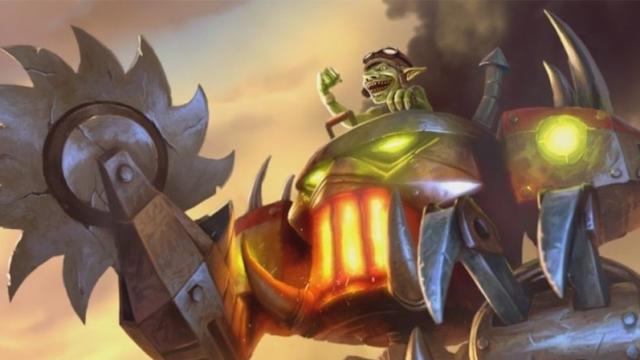
Comments
4 responses to “The Innovative, Controversial Evolution Of Hearthstone”
Great article =] While I do whinge about rngesus in Hearthstone I can’t deny part of the reason I enjoy watching it on Twitch so much is because of the RNG involved!
The RNG is hell fun to watch and when it plays in your favour its amazing. but at the same time it can slam you down into the ground (most of the time) which can suck.
The design team for Hearthstone don’t have a clue what they’re talking about and have wrecked the game with the unrestrained, unchained, unlimited RNG. Victory doesn’t go to the better player, it goes to the one the RNG favours the most. It’s a game that’s fun to watch, but a farce to try and play seriously. Losing because of RNG feels like utter poopiepies, like you were literally robbed of a win that was rightfully yours, while winning thanks to RNG feels cheap and pathetic, unearned. The designers talk crap about how it “cushions the game for beginners” (translation: lets noobs get wins they genuinely don’t deserve because luck favours them) or “creates narratives” (except the narrative is always “something retardedly unlucky happened and I lost unfairly” or “something retardedly lucky happened and I won unfairly”) but it’s all word cruft; what they’ve done is made the game completely non-competitive because it’s easier than balancing.
It’s hardly the first DCCG to push the boundaries of what can be done with the “digital” aspect of “Digital Collectible Card Game” anyway. Infinity Wars did it first and does it MUCH better. Hell, there’s even a card similar to Unstable Portal in Infinity Wars (called, oddly enough Unstable Rift) which does ALMOST exactly the same thing- except it doesn’t give the randomly created minion a retarded 3 mana discount (on a spell that only costs 2 snarfing mana to start with) because Lightmare, unlike Blizzard, understand that these cards are made to be played for fun. Blizzard bent over backwards to ensure that a 100% RNG-based card that can completely derail the entire game without the slightest investment of skill (playing it on the 2nd turn to getting a 6-drop that you can immediately play on your 3rd is literally an instant win if you get the right 6-drop) is not only playable but so overpowered that almost every Mage deck runs it, but Lightmare know that crazy wacky fun cards like Unstable Rift can and SHOULD only be used by people looking for some wacky fun (that’s why they made Unstable Rift an Unlimited card, allowing you to pack as many copies into your deck as you can). Hell, when Unstable Rift was first released it only cost 1 mana (despite still not giving the resource discount) so players began stacking it in their deck to abuse characters that get buffed every time you play a spell in order to abuse it, so you know what Lightmare did? Nerfed it, because Lightmare (unlike Blizzard) actually give a crap when a card is making the game unfun.
In short, screw Hearthstone, go play Infinity Wars.
Bought one expansion, had fun but spending upwards of $100 just to get the basic expansion cards is not good value as my mate Trump would say.